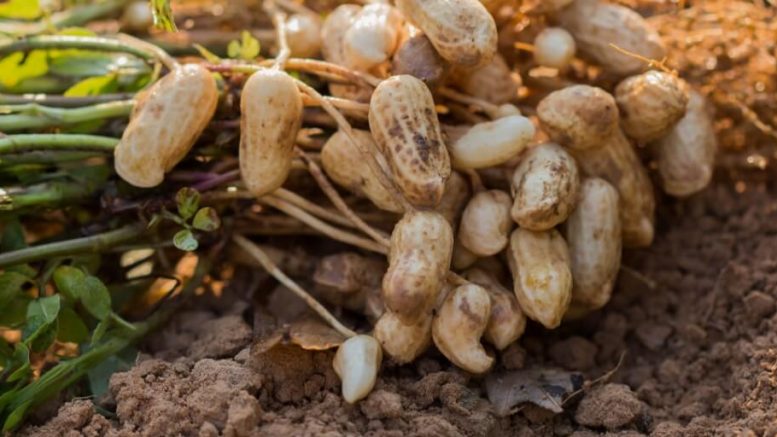“The use of inoculants has been progressively consolidated in peanuts, with the aim of increasing the efficiency of fertilizer use…”
Moniki Campos Janegitz is a branch manager at Agrofito Insumos Agrícolas, an agronomist from the Escola Superior de Agronomia de Paraguaçu Paulista, and has an M.Sc and Ph.D in agriculture from the State University of São Paulo.

Moniki Janegitz, gerente de filial da Agrofito
AgriBrasilis – How significant is the use of inoculants in peanut cultivation?
Moniki Janegitz – Peanuts are a rustic crop, with significant commercial values. The state of São Paulo is the largest producer of peanuts, with the Alta Paulista region (Marília, Tupã, Presidente Prudente) responsible for 60% of national production. What differs from other growing regions is the subsequent planting of peanuts, which does not only occur in pasture and sugarcane reform areas.
The use of inoculants has been progressively consolidated in peanuts, with the aim of increasing the efficiency of fertilizer use. This factor, combined with the price of inoculants, means that these alternatives are more explored.
AgriBrasilis – What are the main inoculants used for each crop? Is the use of bioinputs costly?
When aiming for biological nitrogen fixation, there is a specific inoculant for each crop. For example, a different species is used for soybeans than peanuts, as well as for alfalfa, etc.
Azospirillum, for example, is a genus of bacteria known as “plant growth promoters”, which performs the synthesis of hormones and biological nitrogen fixation in grasses, in addition to ensuring other beneficial processes for plants. At first, Azospirillum was used as an inoculant only for grasses, but today it is used in almost all crops.
The costs of bioinputs vary depending on the objective to which they are aimed. Most bacillus-based biological products allow for more accessible management. Depending on the technology, these Bacillus can be in the form of an endospore, not requiring special applicability and storage conditions and facilitating product mixtures under different conditions, as long as there is compatibility between products. This compatibility table is normally provided by the product manufacturer with technical guidelines.
Another important point to be highlighted is that the registration of biologicals is for pests or diseases and not specifically for culture, favoring a faster launch of the product on the market, when compared to chemicals.
AgriBrasilis – Why is the use of inoculant in opening an area efficient for peanuts and for soybeans should the use be constant?
Moniki Janegitz – The use of inoculants aimed at biological nitrogen fixation in peanuts is not comparable to soybean cultivation because peanuts are native to America, where the rhizobia is already found in the system. Soybeans originate from Asia, which makes it necessary to introduce and multiply microorganisms in the environment to guarantee satisfactory productivity.
Peanut cultivation in open areas, i.e., after pasture, sugarcane, or cassava, has shown positive responses with the use of Bradyrizobium inoculant (strains ESA 123, SEMIA 6144, and 16295), but in subsequent planting, the effect has not been noticeable. Furthermore, peanut varieties have had different responses to the different strains on the market.
AgriBrasilis – Is biological control a common practice in peanut cultivation? Why?
Moniki Janegitz – The Alta Mogiana region mostly uses peanuts to renew sugarcane fields. While in the Alta Paulista region they cultivate peanuts in subsequent planting, not only in “renovation areas”, requiring greater care due to the presence of pathogens in the system. Therefore, the use of biological products is now being adopted at a greater rate even before the crop is established, with pre and post-harvest treatments. The main problems today are black spot (Cercosporidium personatum) and white mold (Sclerotium rolfsii), pathogens that survive for a long time in the soil.
Some farmers have already observed that the excessive use of fungicides has caused an imbalance in the system. Therefore, today biological products have become an excellent alternative. A classic example is the proliferation of the red-necked caterpillar (Stegasta bosqueella): before the cumulative use of fungicides, it was possible to find in nature a species of fungus that controlled the caterpillar, Metarhizium rileyi (formerly known as Nomuraea rileui).
Bioinputs are an intelligent way to regenerate the agricultural system, remembering that the use of these products will always be preventive in nature. The effect is different from the chemical one: you need to be patient, as this is not a “shock” control product and takes time.
It is important to rotate product modes of action and, within planning, include the use of bio-inputs so that more effective control can be achieved, resulting in increased productivity. It is wrong to say that only the chemical or even only the biological will deliver results. The best way is to combine both, seeking balance.
Based on the principle of reducing the use of chemicals, interspersed with the use of biologicals, it is possible to control pests and diseases in this crop, and maintain better preservation of natural enemies in the environment.
READ MORE:

